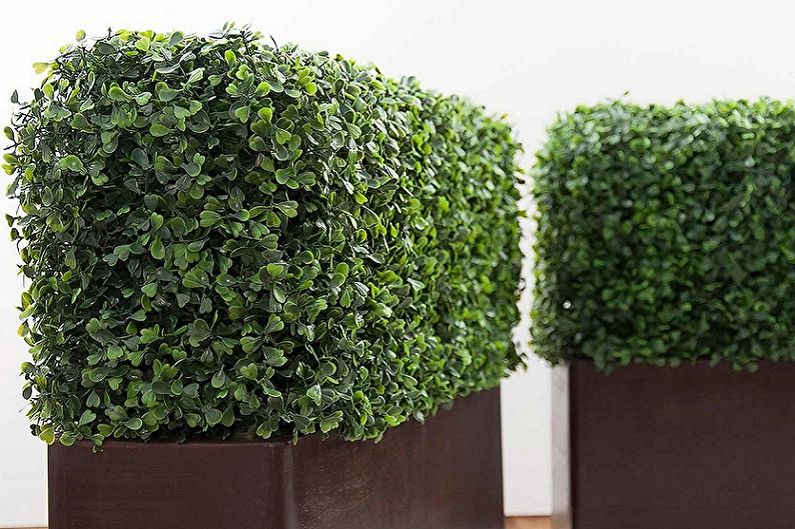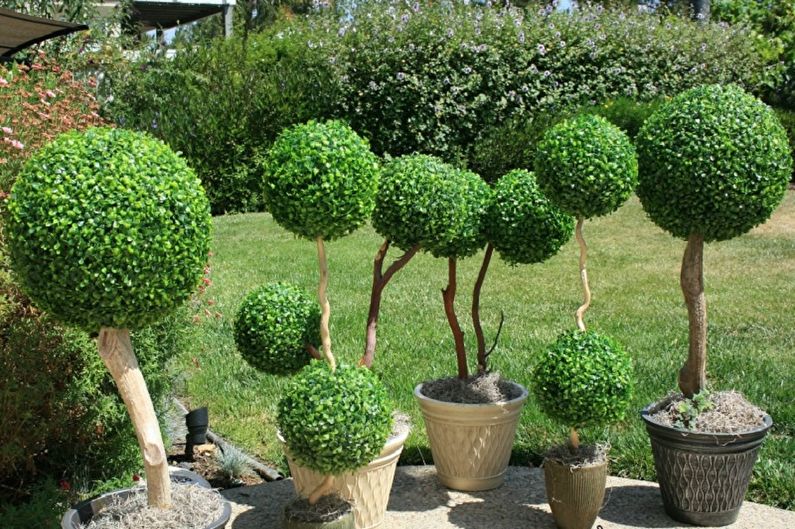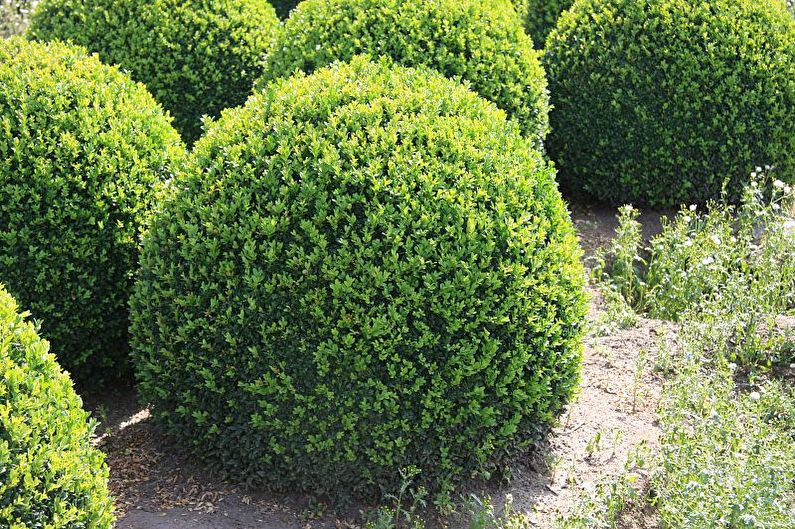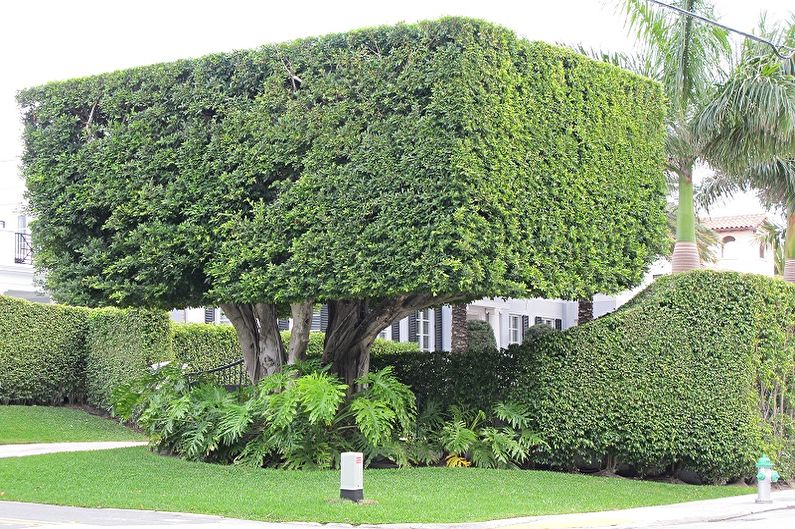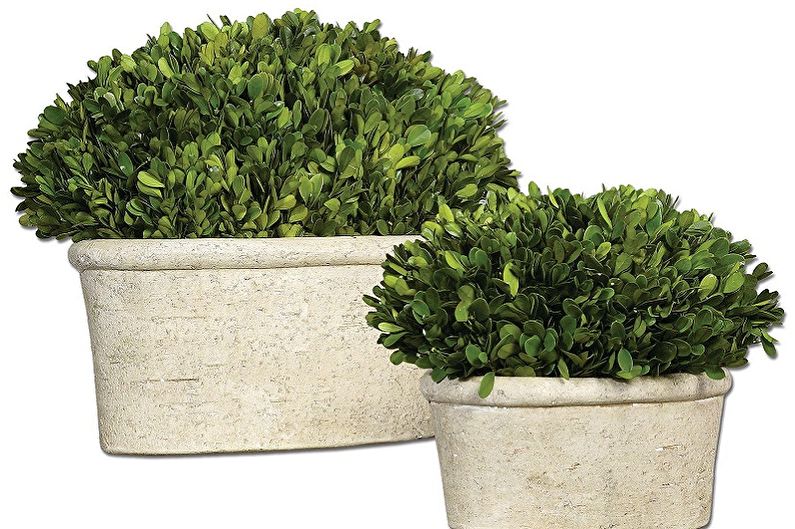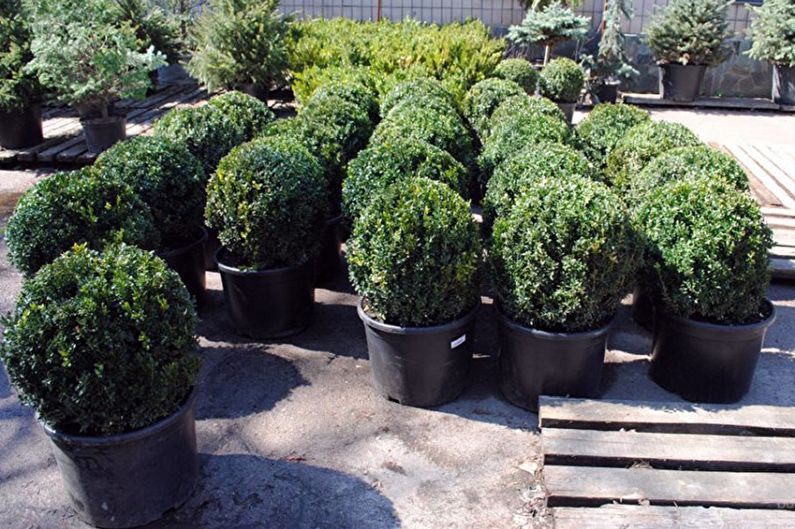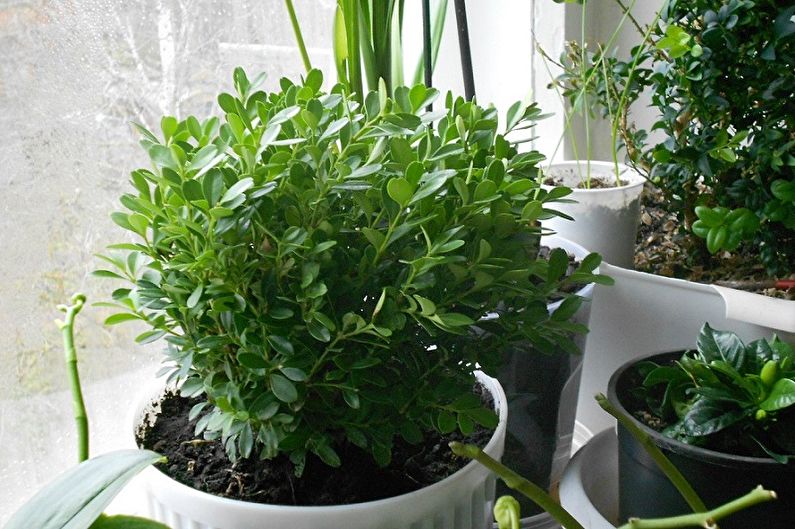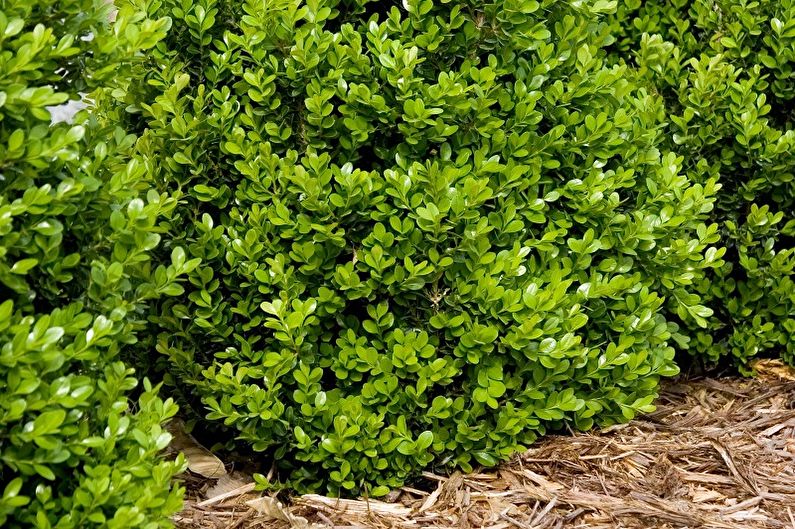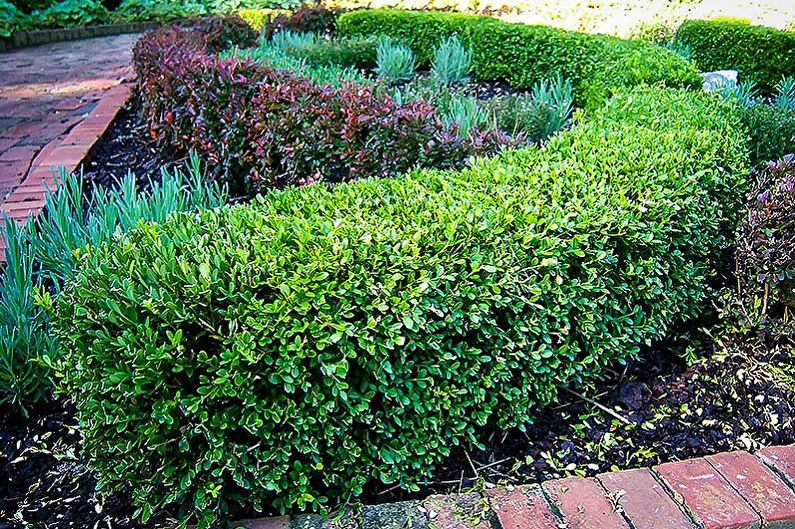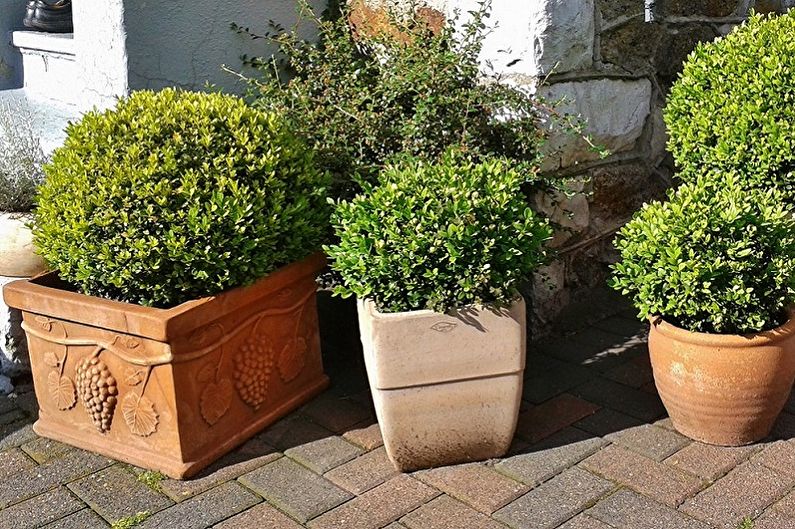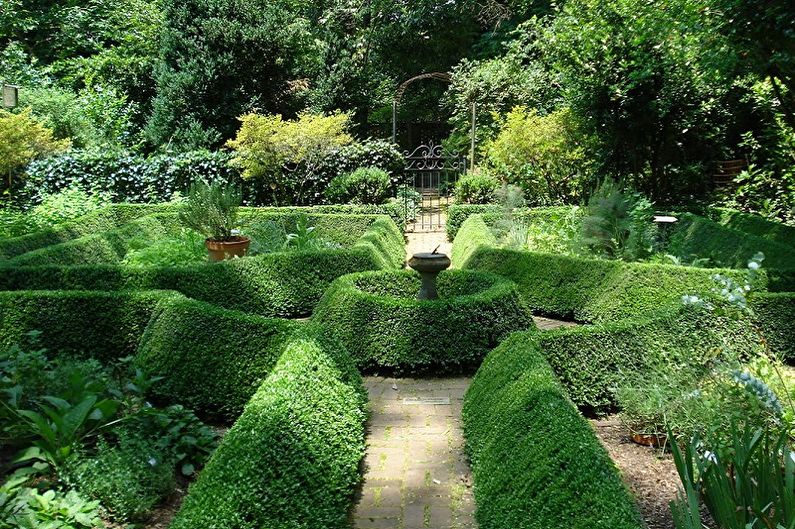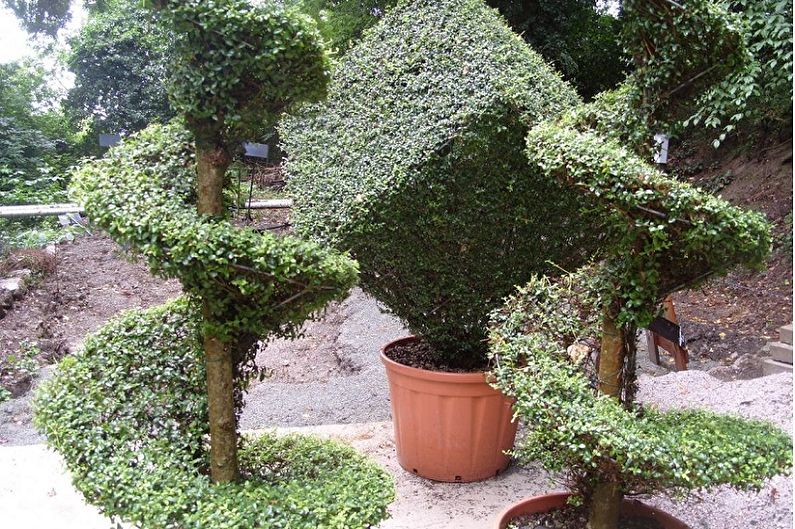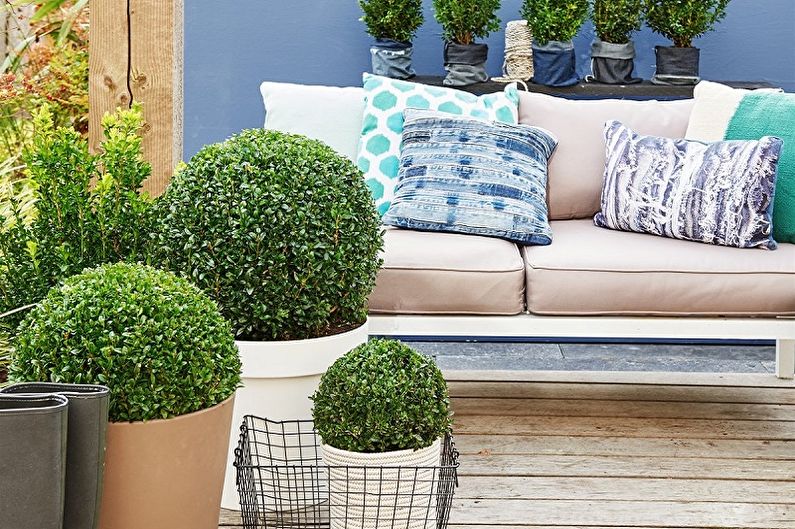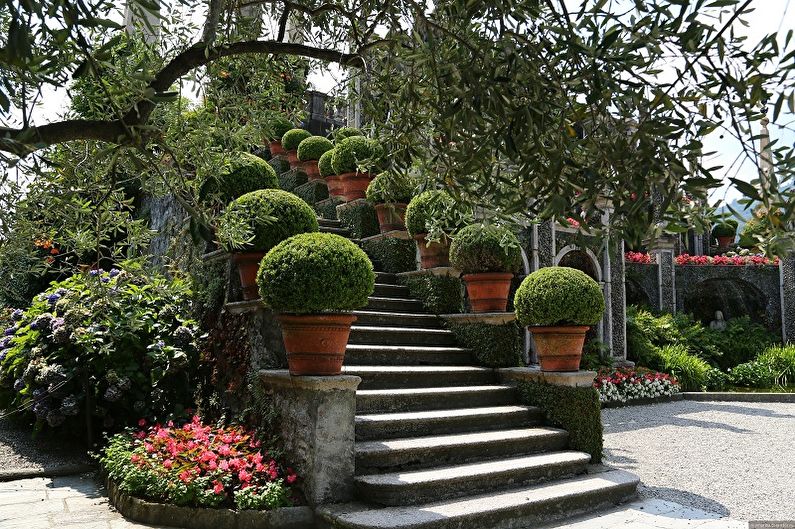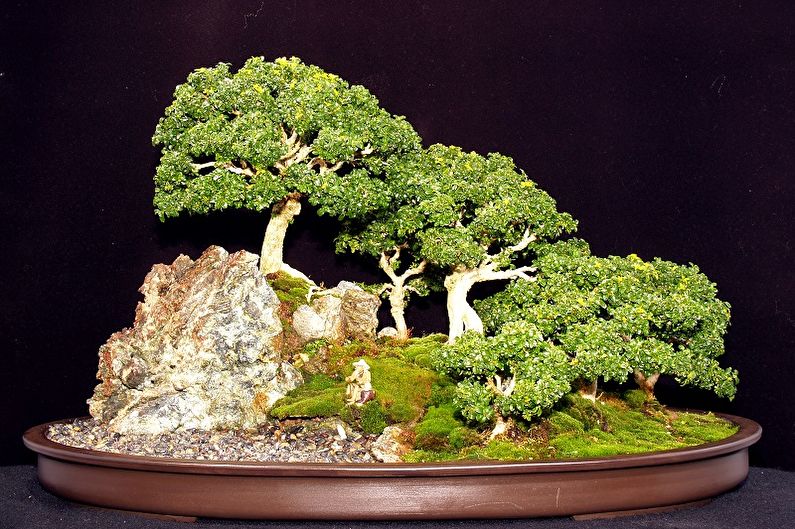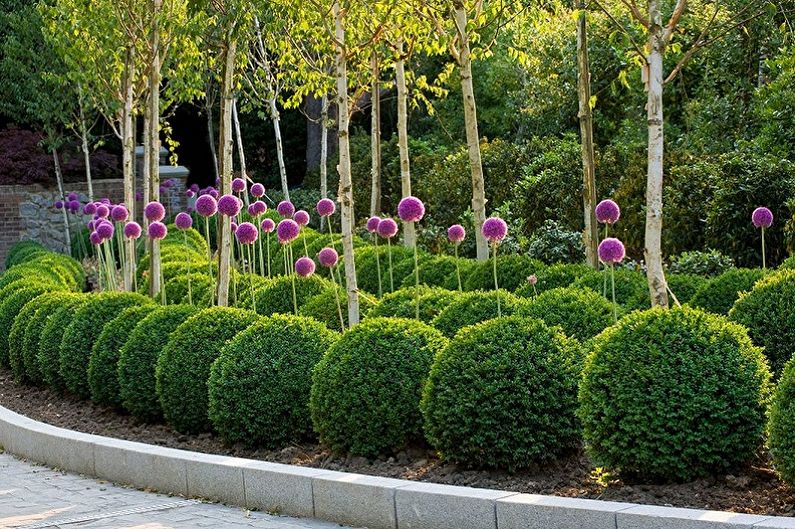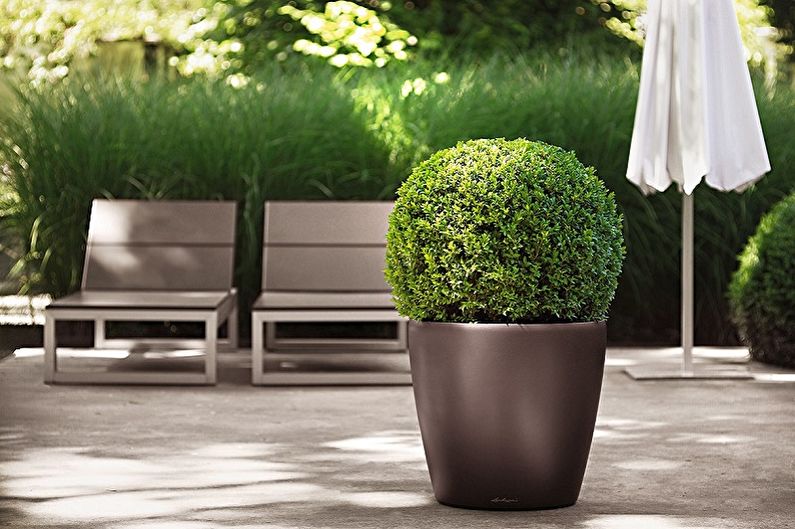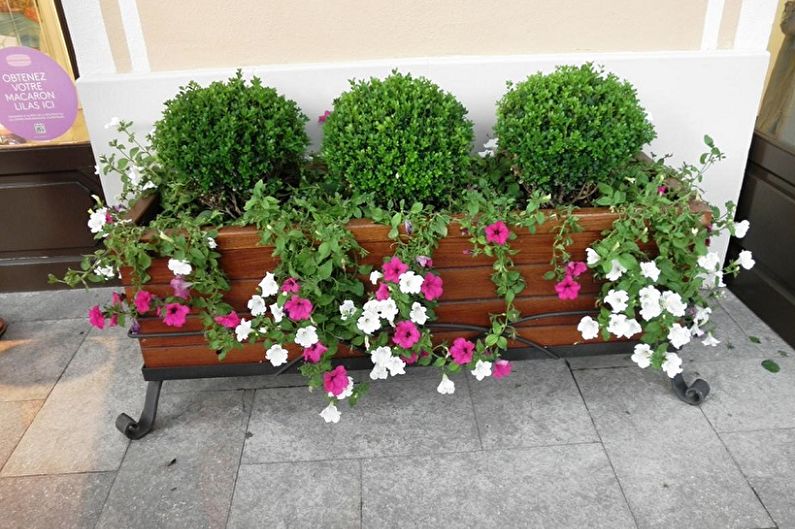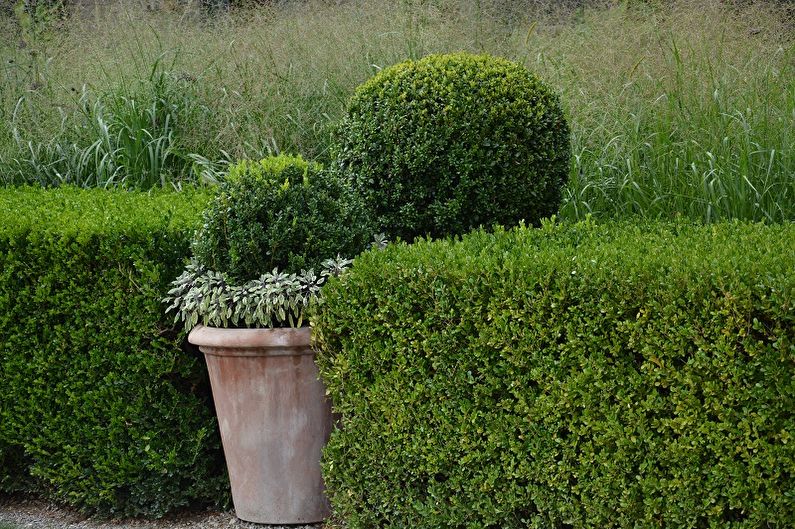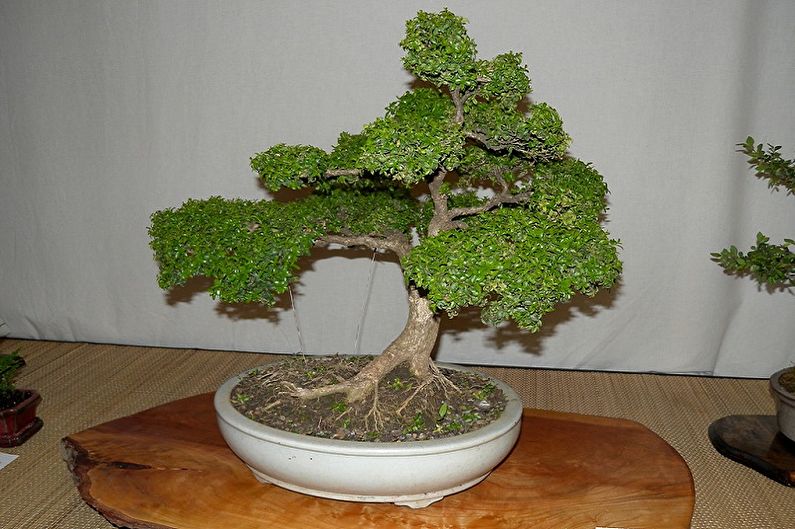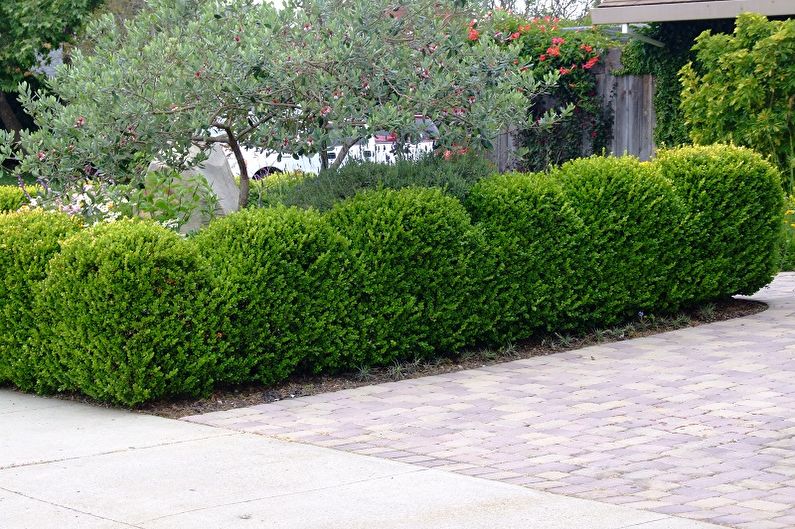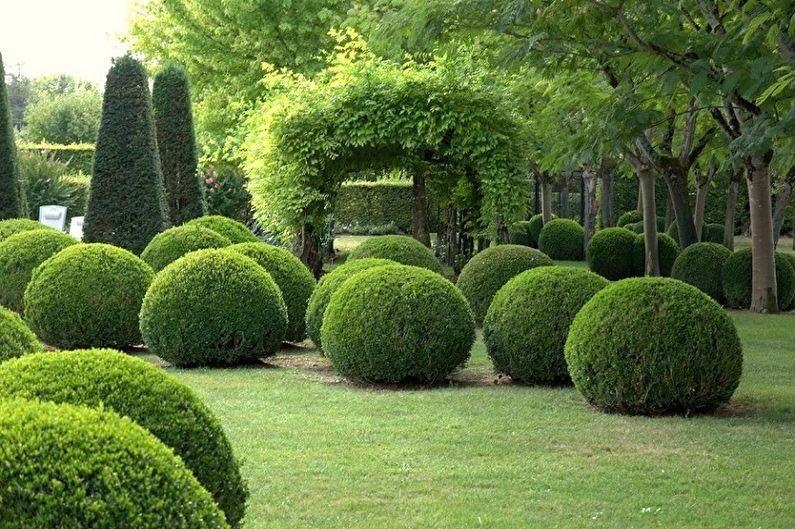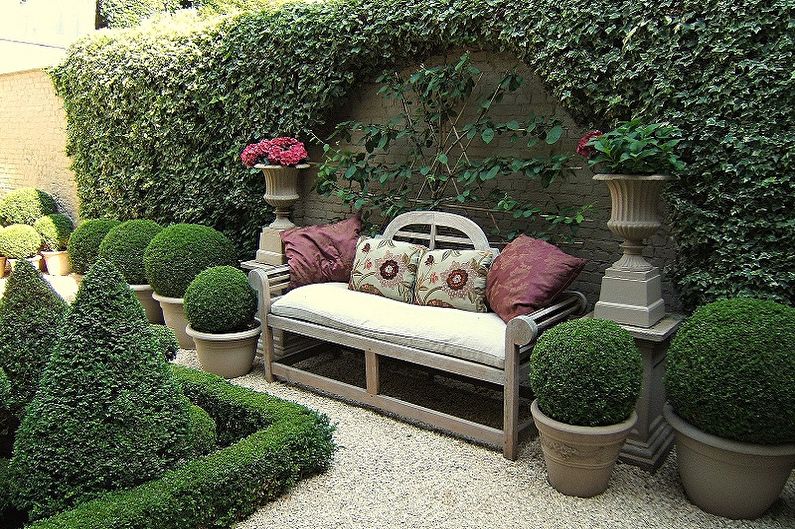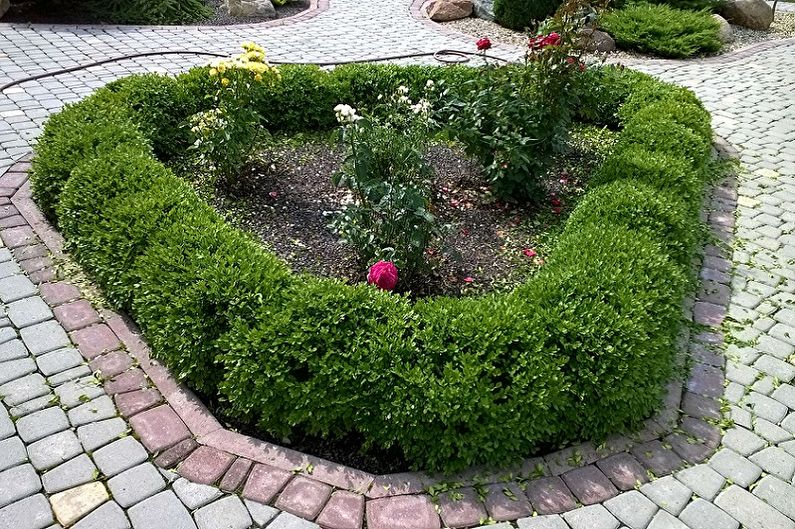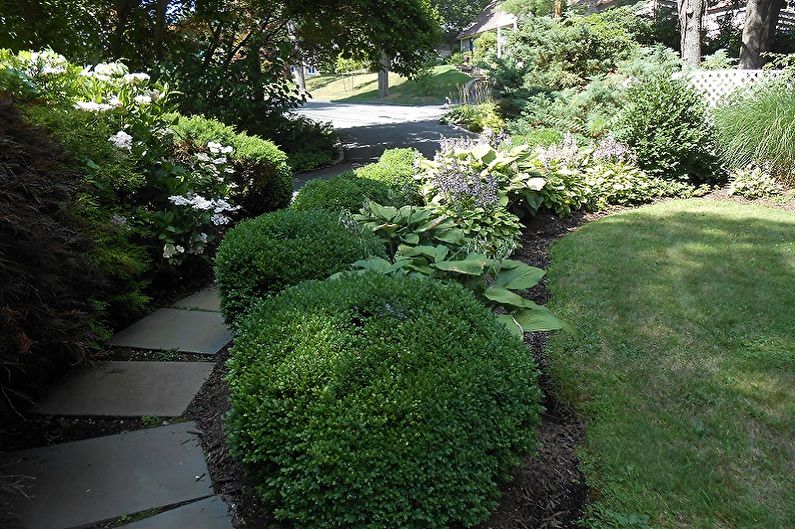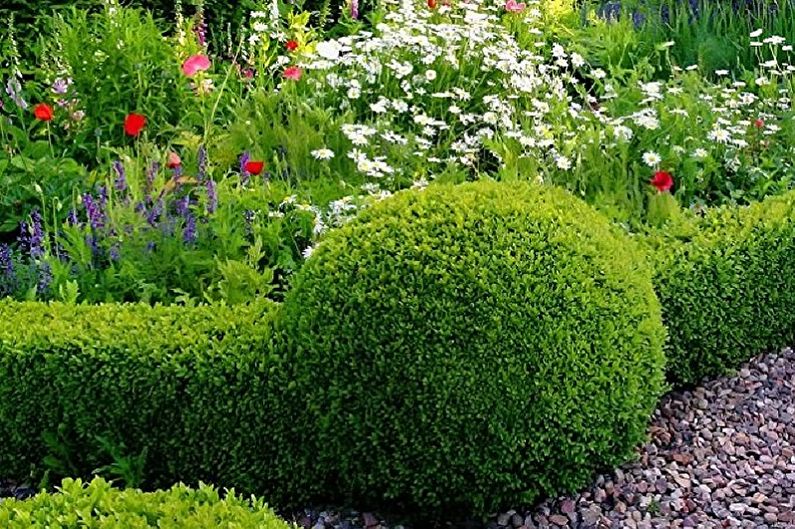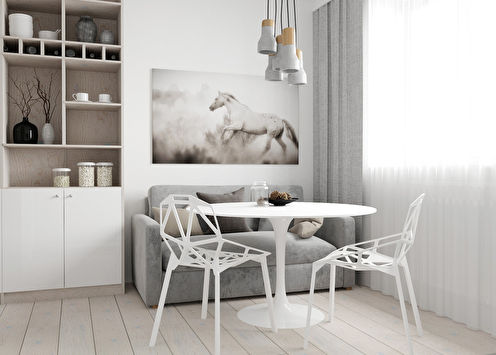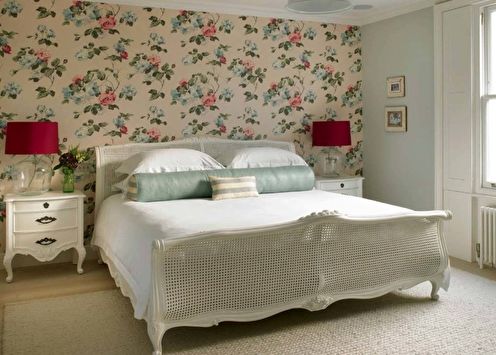
Boxwood is a beautiful evergreen shrub that is popular in almost all corners of Europe, Asia and North America. They appreciate it for its decorativeness, unpretentiousness, a dense crown and the simplicity of its formation. From boxwood create complex hedges, decorate them with lawns, frame flowerbeds, draw borders. In the garden, it is used as the most important basic element. And, importantly, it is very resistant to frost and temperature extremes, so it easily tolerates winter in adjoining areas.
General characteristics
The second name for boxwood is buxus. It belongs to the family of the same name and originally comes from the Mediterranean regions and East Asia. Bushes grow slowly, but as a result form a thick and elastic crown. Landscape designers instantly appreciated such a find. At home, boxwood feels great in flowerpots. Some varieties are even suitable for miniature bonsai seedlings.
Depending on the variety and living conditions, the height of the boxwood can reach 12 m, but it takes many years, because the average growth per year is about 6 cm. Initially, the shoots are graceful, thin and green, and only darken and turn green over time.
Boxwood leaves are round, shiny, with a short petiole, sometimes slightly elongated. They are solid, smooth, deep green, with a groove in the center. In the spring, the bush is blooming. It is covered with small, but fragrant panicle inflorescences. Boxwood fruit is a three-nest box with oblong black seeds.
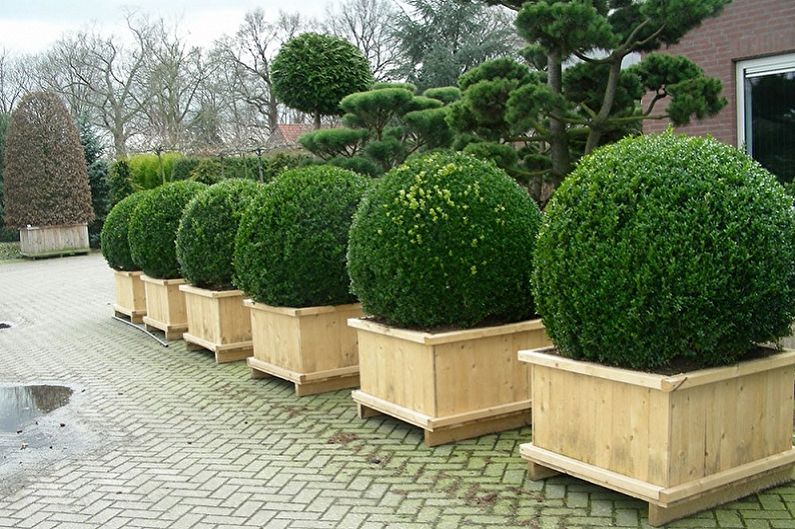

Types of boxwood
There are a lot of types of boxwood, only there are about a hundred popular varieties. Landscaping uses about three dozen varieties, and each of them has its own characteristics. Unites their unpretentiousness, versatility and beauty.
Evergreen boxwood
It comes from the Mediterranean and the Caucasus. This is one of the most heat-loving varieties, so it is hard going through the winter. Outwardly, it is rather a highly branched tree than a bush, because its height can reach 15 m. The branches are straight and densely covered with glossy leaves. The reverse side of the plate is matte, leaves yellow. Length - up to 3 cm. Flowering is shallow, and the flowers themselves are of a light greenish hue.
Some ever more compact subspecies belong to the evergreen boxwoods. Suffruticosa, for example, is a small, graceful shrub with vertical shoots and ovoid monophonic leaves. It is great for medium-sized hedges. Elegance - a small bush in the shape of a ball up to a meter in diameter. Its feature is thin shoots with variegated foliage with white trim.
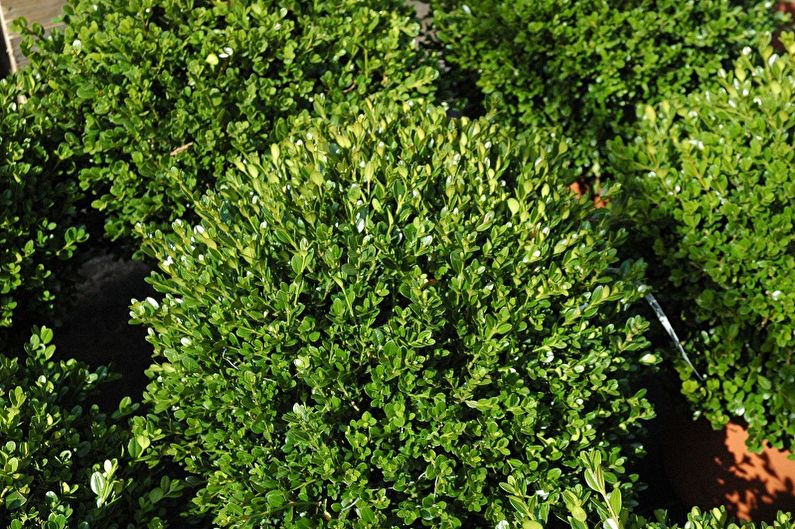
Small-leaved boxwood
This is a frost-resistant axle box from China and Japan up to 1.5 m high. Its feature is wide oval leaves up to 2.5 cm and lush inflorescences formed from fragrant small white flowers.
The two most popular varieties in this category are Winter Gem and Faulkner. The first is perfect for cool, shady areas. It grows rapidly and is often used for edging flower beds. The second is an ideal choice for the formation of green sculptures.
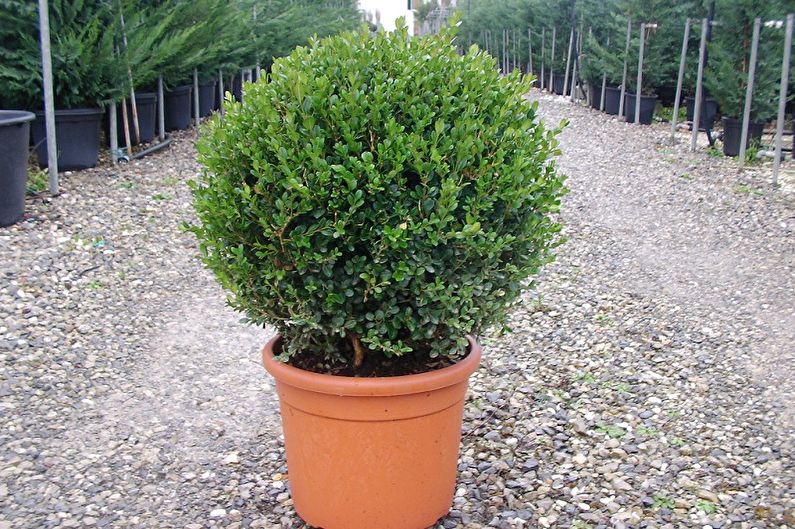
Colchis boxwood
Speaking about boxwood, one cannot but mention Colchis. This is a rare and relict variety listed in the Red Book. The height of the shoots can reach as much as 20 m, and they live in the wild for up to 600 years. The trunk thickness during this time reaches 35 cm. With such impressive dimensions, the foliage remains small and decorative, although fleshy.

Other varieties
Of the other popular varieties, it is worth noting such types of buxus:
Arborescens is a dense shrub with fleshy egg-shaped dark leaves. Suitable for shady regions. It grows well on drained calcareous soil.
Blauer Heinz - an unusual squat appearance with a bluish tint of foliage.It is growing slowly, but one of the most frost-resistant. Well adorns borders, used to create decorative ornaments and green carpets.
Buxus Harlandii Hance is the best variety for creating miniature bonsai compositions. It grows very slowly, and its leaves are small enough to look proportionate.
Sempea is one of the most undemanding and widespread varieties in our latitudes. He is not afraid of cold winters, tolerates a haircut and is also suitable for creating complex green figures.
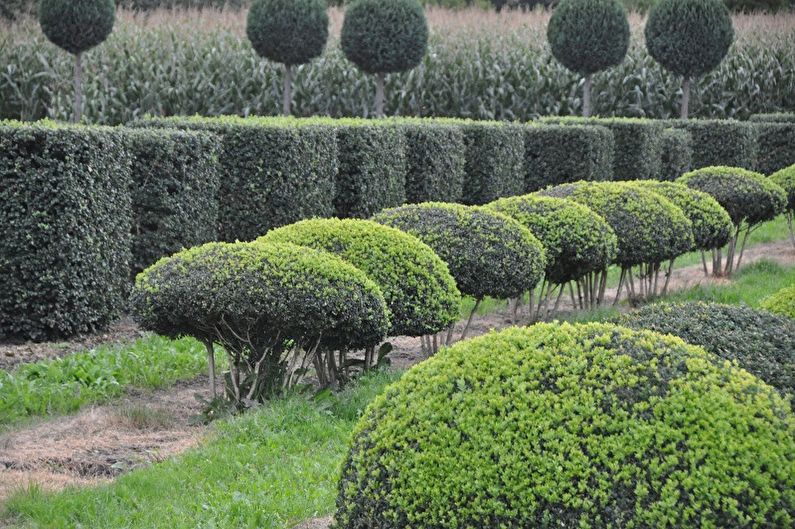
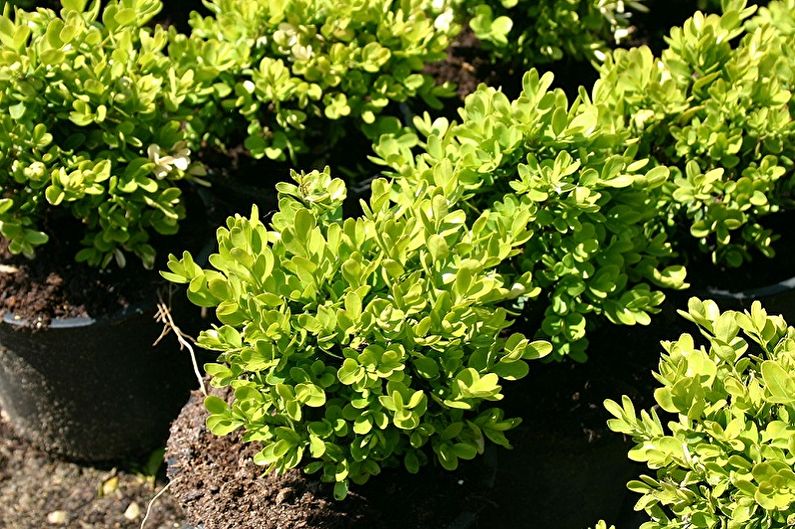
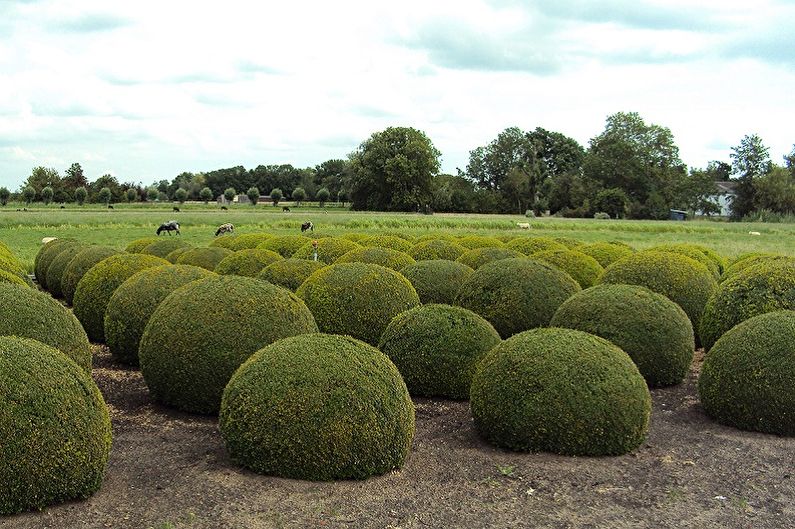
Boxwood Care
Boxwood is easy to care for. The main thing is to properly land him from the very beginning. Ideally, you need partial shade and loose, fertile, clay soil. Planting is carried out in the fall so that seedlings adapt to frost. At first, the plants are intensively watered. Perlite is poured into the landing pit for drainage. The roots need to be divided and evenly distributed throughout the hole. To create a hedge, boxwood is planted with an interval of up to 25 cm, and for a green carpet - up to 20 cm and in a checkerboard pattern.
Further care comes down to protection from wind and draft. Additional watering is needed only if there has not been rainfall for too long. Boxwood is not afraid of short droughts. In the same way, it tolerates heat and frosts up to -20С.
The earth must be periodically loosened and weeds removed. Peat is used for mulching. A light and tidy shower is periodically used to flush dirt off foliage.
The more often you cut the bush, the more regularly it needs to be fed so that the plant has time to recover. There are special complex fertilizers for evergreen species. The composition is selected for the season. In the warm season and the period of active growth, for example, there is not enough nitrogen and phosphorus. In autumn, pay attention to superphosphates and potassium salt, but dilute the mineral solution so as not to burn the root. Never use concentrated fertilizers.
In addition to decorative molding trimming, damaged, frozen and withered shoots must be removed from mid-spring. Decorative crowns will have to be formed monthly, because the bush begins to grow denser. Sometimes the old boxwood has to be thinned out when it is too overgrown. To do this, cut down a couple of old branches.
An important nuance: you need to work with boxwood very carefully. In its leaves, the concentration of harmful substances is increased. Therefore, it is advisable to use gloves and wash your hands thoroughly after contact. Care must be taken with children and animals.
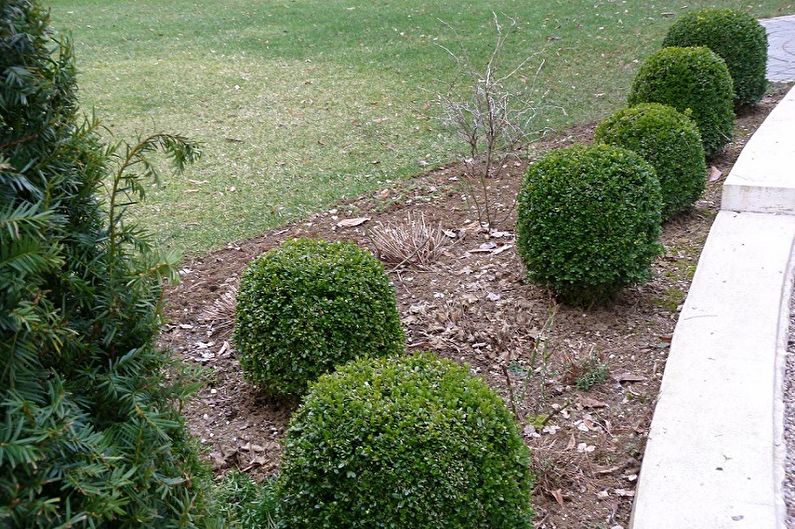
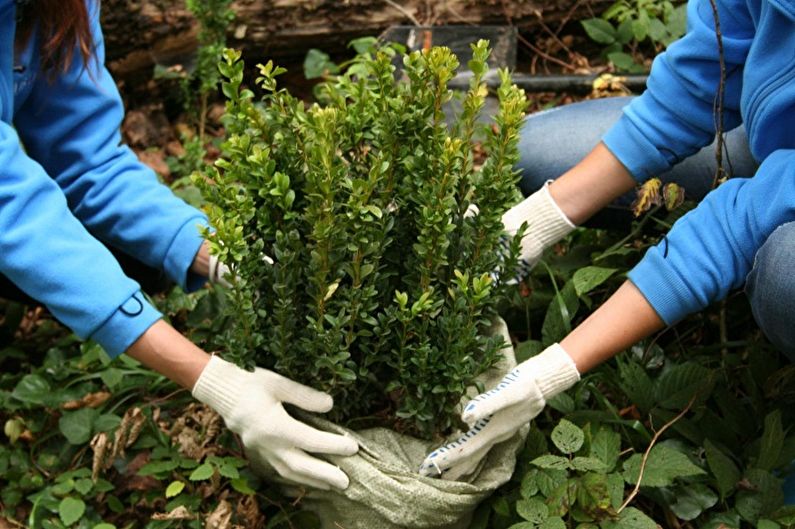
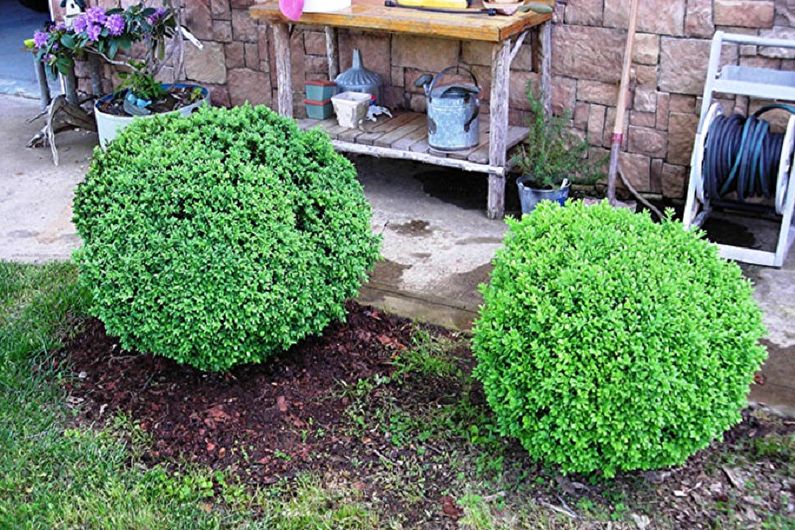
Transplantation and reproduction
Boxwood propagates in classical ways: seeds, cuttings and layering.
Seeds are practically not used in everyday life. They easily lose their germination ability, and the process itself is quite complex and specific. First you have to treat the planting material with a professional stimulator, then germinate it in a moistened tissue, stratify, create seedlings under the film and constantly fertilize the seedlings.
Cuttings are the most common method. With the beginning of spring, cut green non-woody shoots about 15 cm long, remove all the foliage from below, leave them for a day in the stimulator and plant them in the ground. Ideally, in fertile and previously loosened soil with humus and compost. Sometimes you can even do without seedlings and immediately plant a plant in open ground. It takes 1-2 months to root. The first year in winter, it is imperative to carefully cover the bush. Potted seedlings are generally best removed indoors.
Layering propagation is another simple and effective technique. To do this, the young lower shoot is simply tilted to the soil and fixed in this position. The top definitely needs a support rod. Then water and fertilize not only the mother bush, but also the future seedling. Over time, it will take root, and then it can be separated and transplanted.
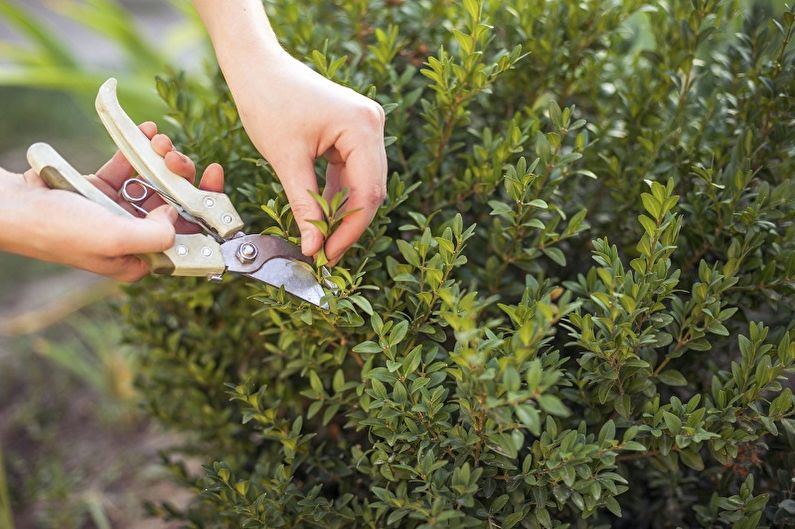
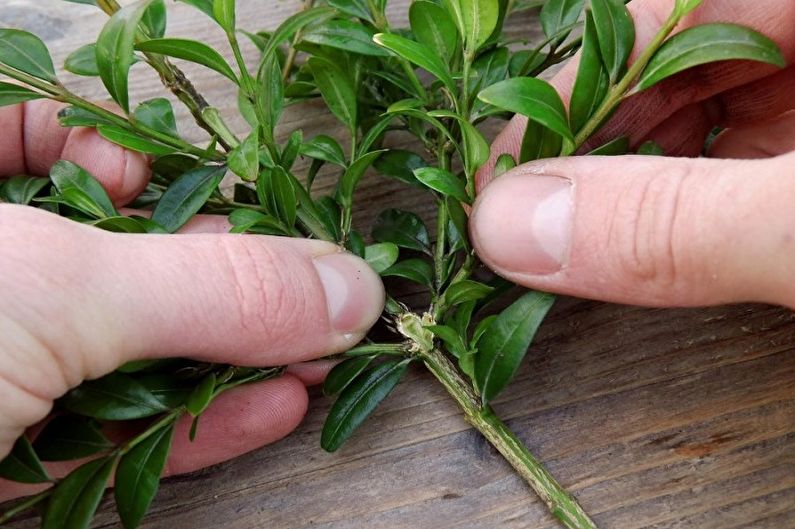
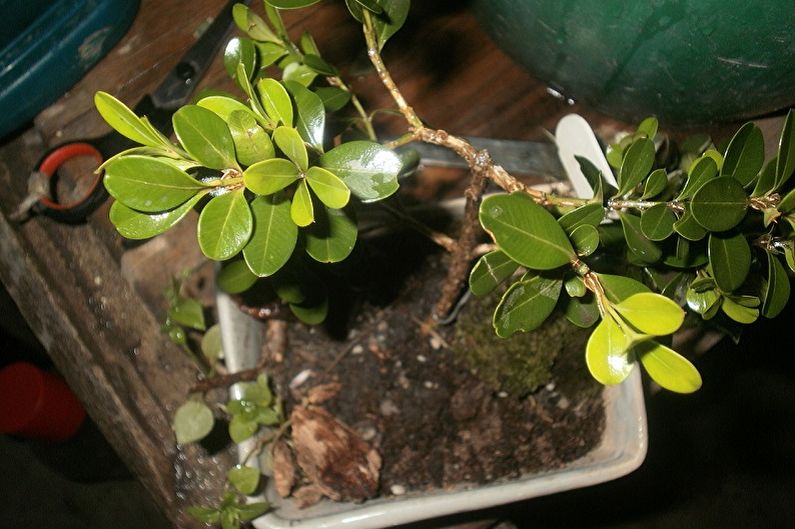
Pest and Disease Control
One of the features of boxwood that gardeners value most is its resistance to diseases and parasites.All major varieties have good immunity and resistance to external stimuli.
Rarely develops necrosis of shoots. It can be determined by the drying tops and spotty leaves. It is enough to trim the damaged fragments and treat the bush with fungicide.
Of the parasites, boxwood most often affects gall midge, which lays eggs on it. This affects both the health and aesthetic qualities of the plant. Therefore, it is important to constantly check the foliage in order to quickly detect infection and treat all with insecticides. The same drugs help prevent the invasion of aphids, felt and ticks.
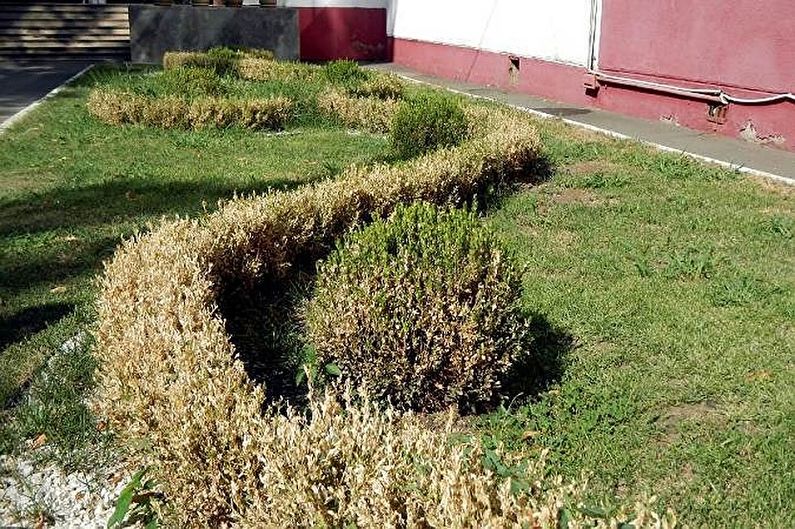

Boxwood - photo
To make your beloved green corner not only healthy, but also beautiful, check out our selection of photos. We have collected the most interesting solutions with boxwood for inspiration. Enjoy watching!

